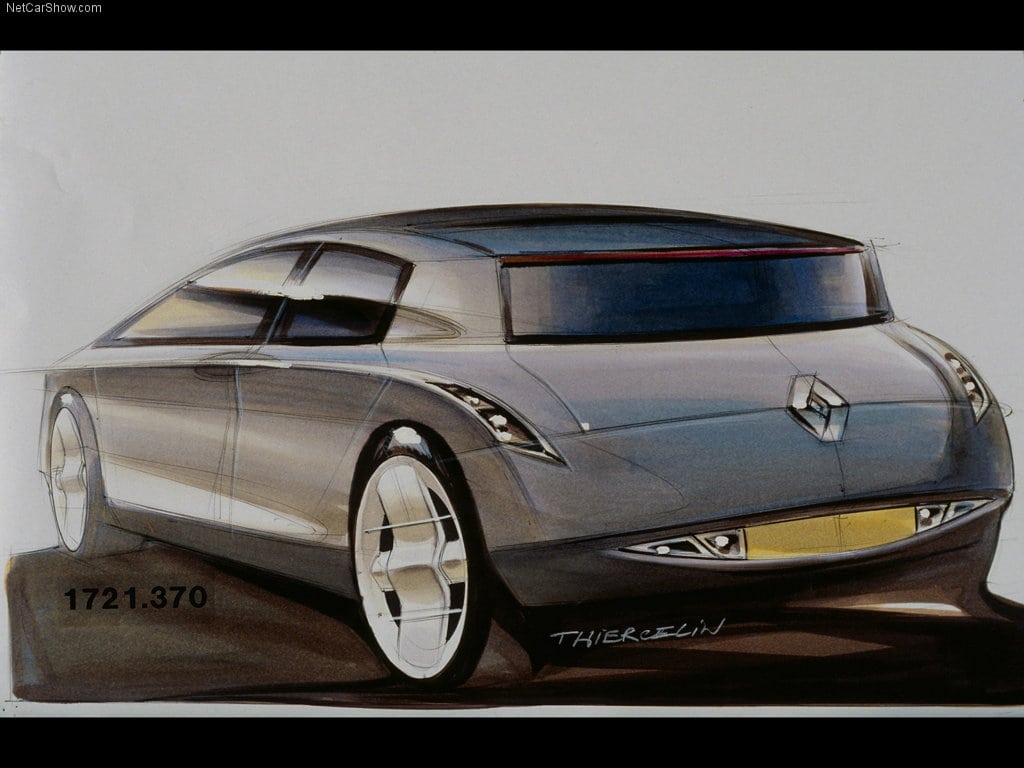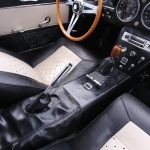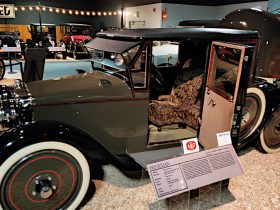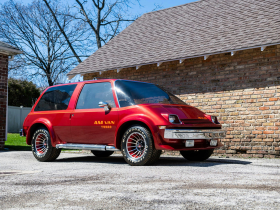Race driver John Fitch had a very successful racing career through the 1950s and 60s after an equally successful airplane piloting career in World War II. While driving high-end sports cars like the Cunningham-Chrysler C4-R (in which he won the 12 Hours of Sebring) and the Mercedes-Benz 300 SL (in which he won the Mille Miglia), Fitch also designed his own vehicles. Five in all.
He was most obsessed with the Chevrolet Corvair, which became the basis for his most famous design, the Fitch Phoenix.
In 1950, Fitch modified a Fiat 1100 with a Ford flathead engine for midget racing. He then modified it further with a Crosley body to call it the Fitch Model B. He also modified a Jaguar XK120 by fitting an aluminum body to lighten its weight. He rebuilt an Allard J2 from a wreck, added a Cadillac engine, and won the Gran Premio de Eva Duarte Peron race. Soon he was also factory racing in vehicles like the above-mentioned C4-R and 300 SL.
In road racing, though, Fitch was enamored with the Chevrolet Corvair. A car that we now know was ahead of its time, the Corvair got little credit as a sports model. He made one into the Fitch Sprint, upping output to 155 horsepower and changing suspension components, steering ratio, and wheel alignment for racing. Chevrolet capitalized on this to attempt to sell models of the Sprint, but with little public interest despite Fitch’s spectacular finishes with the car.
Fitch eventually began work on the Fitch Phoenix, his first ground-up design for a vehicle. Taking liberal cues from the Corvette Mako Shark and Bizzarini 1900 GT, the Phoenix was based on a Corvair chassis and engine. The rear-mounted engine was modified with Weber carburetors to improve horsepower to 175. Other elements included Fiat 1500C tail lamps and off-the-shelf wheels and interior fitments.
The Fitch Phoenix debuted at the 1966 New York Auto Show and was slated for limited production (about 500) with a price tag under $9,000. Professionals and journalists who drove the car remarked at how balanced its handling was and how well it performed. 0-60 mph sprints at 7 seconds were possible with 130 mph being its top speed.
Unfortunately for Fitch and sports car enthusiasts, the world conspired against the Phoenix ever going beyond his hand-built prototype. Congress passed the Highway Safety Act, after a lot of undeserved Corvair-bashing rhetoric from Ralph Nader, which made small production vehicles difficult to sell. That same year, Chevrolet (thanks to Nader’s bashing) decided to discontinue the Corvair, which would have left Fitch with no chassis or engine to build upon.
The prototype Phoenix remained with Fitch until his death in 2012. It came up for auction at Bonhams in 2014 and sold for $253,000 after minor restoration from Wayne Carini of Discovery Channel’s Chasing Classis Cars.
Fitch himself lives on as his legacy of motorsport safety continues to affect driver safety in the industry. The Fitch Barrier System, for example, is the basis for the sand-filled safety barrels now found on highways around the country and racetracks around the world. As well as the Fitch Compression Barrier often seen on oval tracks. These are just a few of the many inventions John Fitch created for both road and track.



















Leave a Reply